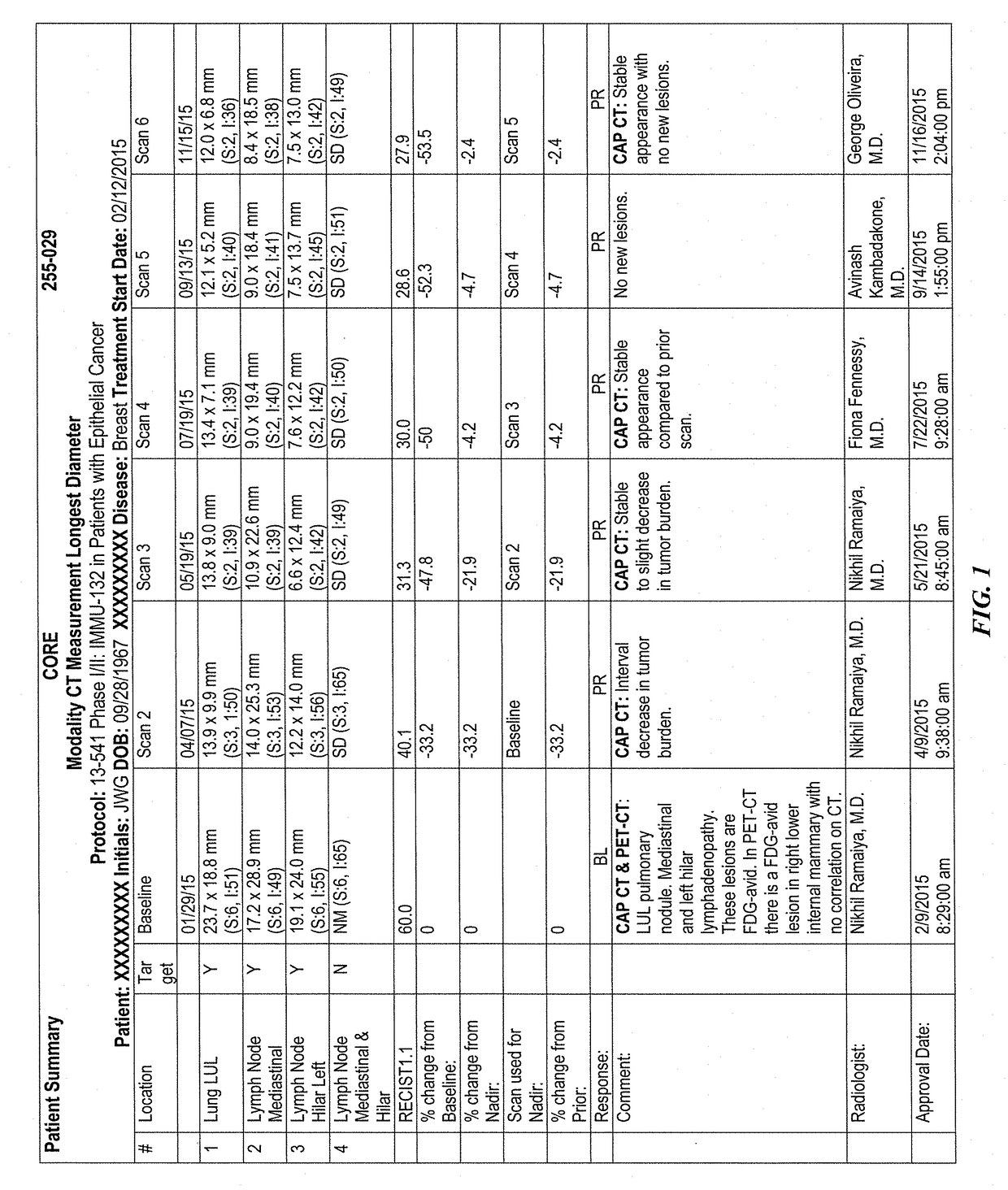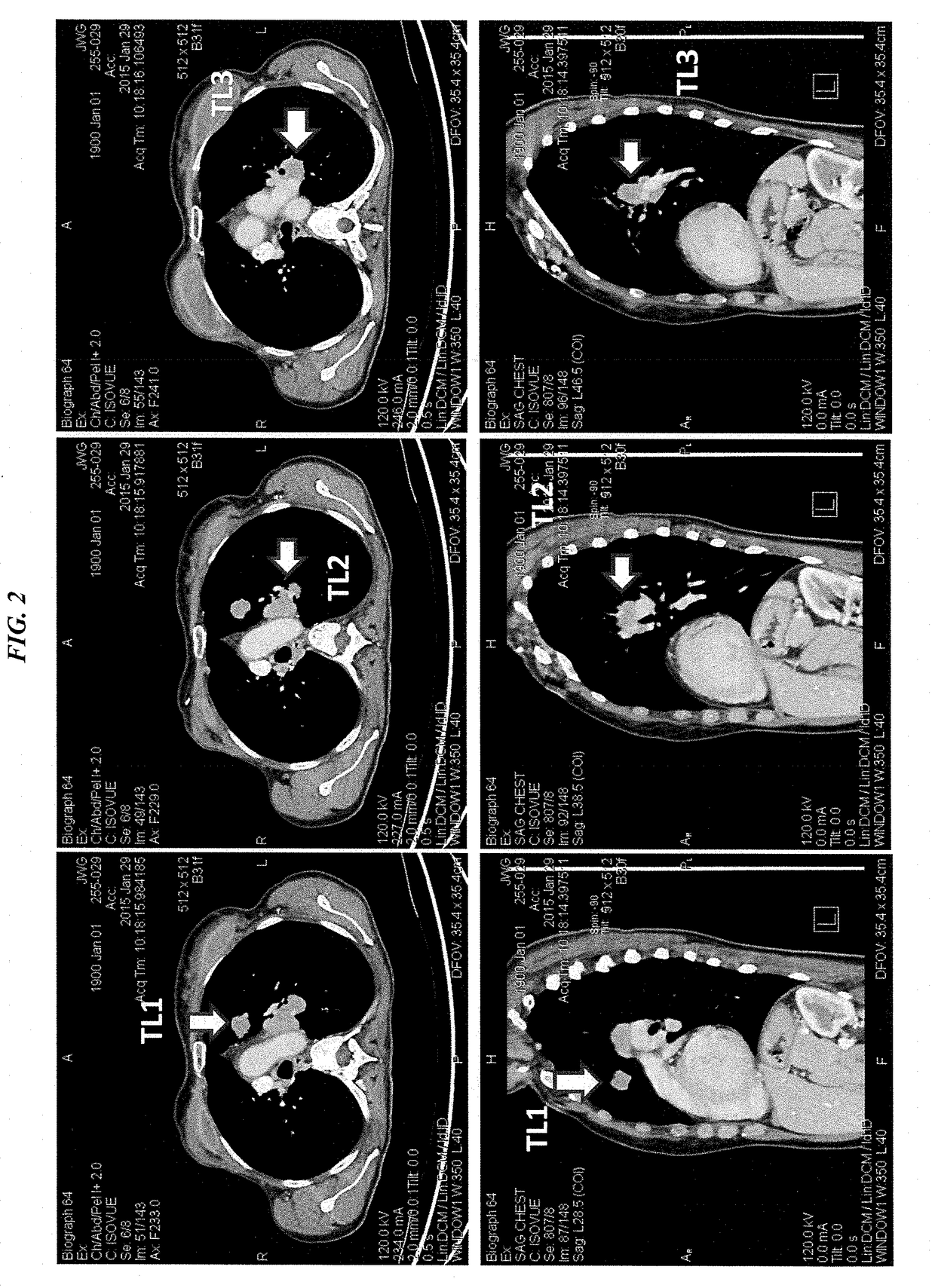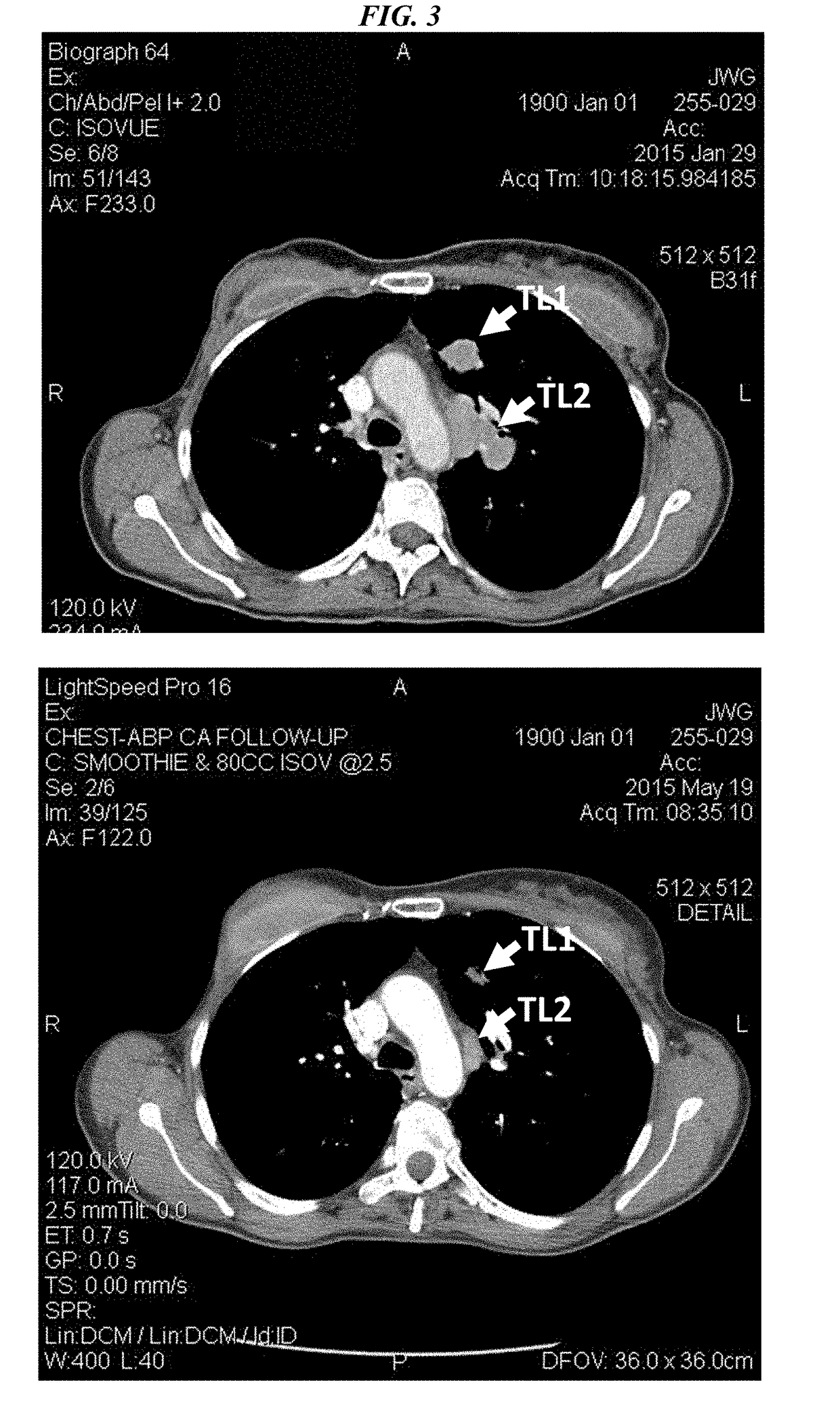Efficacy of Anti-trop-2-sn-38 antibody drug conjugates for therapy of tumors relapsed/refractory to checkpoint inhibitors
a technology of anti-trop-2-sn-38 and antibody conjugates, which is applied in the direction of immunoglobulins, peptides, drug compositions, etc., can solve the problems of mixed success in human cancer therapy, virtually no application in other diseases, and insolubility of most cpt derivatives in aqueous buffers, so as to improve targeting and enhance the delivery of the therapeutic agent. , the effect of improving the drug delivery efficiency
- Summary
- Abstract
- Description
- Claims
- Application Information
AI Technical Summary
Benefits of technology
Problems solved by technology
Method used
Image
Examples
example 1
n and Use of Anti-Trop-2-SN-38 Antibody-Drug Conjugate
[0210]The humanized RS7 (hRS7) anti-Trop-2 antibody was produced as described in U.S. Pat. No. 7,238,785, the Figures and Examples section of which are incorporated herein by reference. SN-38 attached to a CL2A linker was produced and conjugated to hRS7 (anti-Trop-2), hPAM4 (anti-MUC5ac), hA20 (anti-CD20) or hMN-14 (anti-CEACAM5) antibodies according to U.S. Pat. No. 7,999,083 (Example 10 and 12 of which are incorporated herein by reference). The conjugation protocol resulted in a ratio of about 6 SN-38 molecules attached per antibody molecule.
[0211]Immune-compromised athymic nude mice (female), bearing subcutaneous human pancreatic or colon tumor xenografts were treated with either specific CL2A-SN-38 conjugate or control conjugate or were left untreated. The therapeutic efficacies of the specific conjugates were observed. In a Capan 1 pancreatic tumor model, specific CL2A-SN-38 conjugates of hRS7 (anti-Trop-2), hPAM4 (anti-MUC-...
example 2
ic Use of Anti-Trop-2 ADC (Sacituzumab Govitecan) in Patients Refractory to Checkpoint Inhibitor Therapy
[0212]Summary
[0213]IMMU-132 (sacituzumab govitecan, aka hRS7-CL2A-SN-38) has shown promising therapeutic results in phase II trials of patients with metastatic triple-negative breast and other cancers who were heavily pretreated (ClinicalTrials.gov, NCT01631552), and who express high levels of Trop-2. This novel Trop-2-targeting humanized antibody is conjugated with 7.6 moles of SN-38, the active form of irinotecan, by the CL2A linker discussed above, and is less glucuronidated in vivo than irinotecan, accounting for a significantly lower incidence of diarrhea in patients treated with the agent.
[0214]Surprisingly, IMMU-132 is highly efficacious in patients who have previously relapsed from or shown resistance to many standard anti-cancer therapies, including the parent compound irinotecan. A new class of anti-cancer agents, known as checkpoint inhibitors, include antibodies or oth...
example 3
vity of Anti-Trop-2 ADCs
[0233]The ADCC activity of various hRS7-ADC conjugates was determined in comparison to hRS7 IgG (not shown). PBMCs were purified from blood purchased from the Blood Center of New Jersey. A Trop-2-positive human pancreatic adenocarcinoma cell line (BxPC-3) was used as the target cell line with an effector to target ratio of 100:1. ADCC mediated by hRS7 IgG was compared to hRS7-Pro-2-PDox, hRS7-CL2A-SN-38, and the reduced and capped hRS7-NEM. All were used at 33.3 nM.
[0234]Overall activity was low, but significant (not shown). There was 8.5% specific lysis for the hRS7 IgG which was not significantly different from hRS7-Pro-2-PDox. Both were significantly better than hLL2 control and hRS7-NEM and sacituzumab govitecan (P<0.02, two-tailed t-test). There was no difference between hRS7-NEM and sacituzumab govitecan.
PUM
| Property | Measurement | Unit |
|---|---|---|
| pH | aaaaa | aaaaa |
| pH | aaaaa | aaaaa |
| volume | aaaaa | aaaaa |
Abstract
Description
Claims
Application Information
 Login to View More
Login to View More - R&D
- Intellectual Property
- Life Sciences
- Materials
- Tech Scout
- Unparalleled Data Quality
- Higher Quality Content
- 60% Fewer Hallucinations
Browse by: Latest US Patents, China's latest patents, Technical Efficacy Thesaurus, Application Domain, Technology Topic, Popular Technical Reports.
© 2025 PatSnap. All rights reserved.Legal|Privacy policy|Modern Slavery Act Transparency Statement|Sitemap|About US| Contact US: help@patsnap.com



